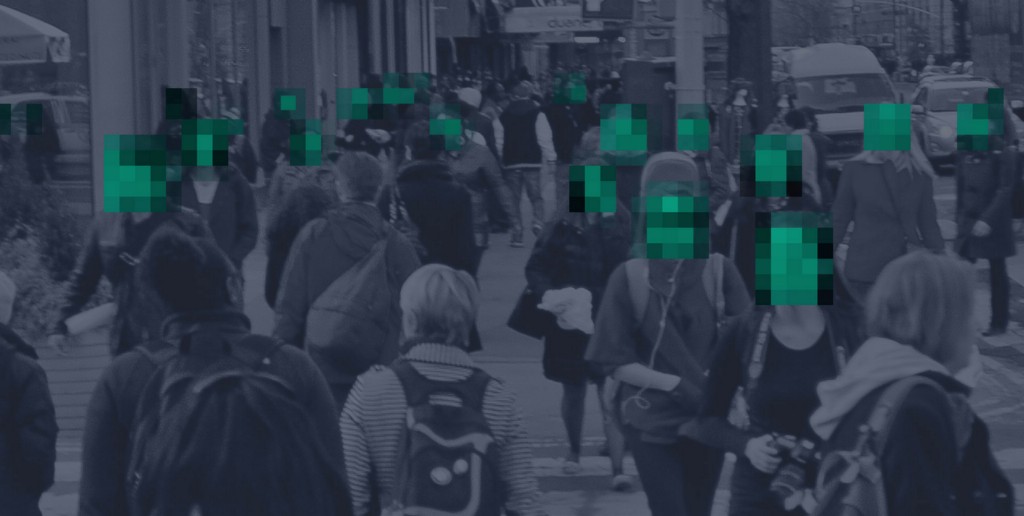Observations from a product designer.

1. We will have second lives in a massive virtual environment.
It won’t exactly be like Ready Player One, but our primary social gatherings will shift to entirely virtual settings. In fact, this transition has already begun.
We already spend an average of 145 minutes a day on social media. The most popular video games today are all multiplayer-centric, like Fortnite and PUBG. And as graphics processors continue to become faster and more portable, virtual reality continues to edge closer to mainstream consumer adoption.
It’s just a matter of time before someone combines these things and creates a massive virtual environment for us to inhabit — and the appeal will be nearly universal. Imagine going to the movies with your friends, but without the commute and the waiting — just wear your goggles, and you’re all there. Amusement parks, IKEA showrooms, adventure sports, conferences — all of these real experiences are getting their virtual counterparts.
Climate change, traffic, and pollution is already discouraging us from going out for a good time. The pandemic turbocharged the transition to remote work and play, while also giving us new reasons to avoid physical contact. Soon, future generations will think of movie theatres the way we think of circuses or operas today — “something our parents used to do.”
And the cherry on the cake? You can look like anything or anyone you want in a virtual world. The plethora of beauty apps and filters we have today is proof that we are never comfortable enough with our looks; and besides, if you can roam around as Tony Stark, the Mandalorian, or a goat (or all of them!), few will prefer their real-world avatars.
So in terms that Matrix fans will understand, we’ll willingly take the red pills. It’s the closest most of us will ever get to starting a new life.
Players to keep an eye on –
Epic Games, Facebook/Oculus, NVidia, Sony.

2. Online communities will be the next big thing.
Discord, OnlyFans, Twitter, and Clubhouse have already stumbled across the power of real-time communities. Very soon, expect entire institutions to be rattled, as people figure out they can just cut the middlemen and go straight to the source to get what they want.
Nowhere will this change be more obvious than in education.
Imagine tutors and mentors directly teaching thousands of people online in real-time; universities would go bankrupt overnight. Why pay thousands of dollars for a degree (most of which just goes to the administrators and the basketball courts), when you can just learn straight from the best in the business? Everyone saves time, students bypass a future of crippling debt, tutors earn more money, and for-profit capitalism gets a slap in the face.
We already use LinkedIn to expand our professional networks and get access to new opportunities, things that could only happen in colleges 50 years ago. And we’re learning much more from the internet than we ever would in graduation. I learnt music production off YouTube and Product Design from Medium, and now fund my existence with that knowledge.
Community-centric online interactions will also have effects far beyond our student and professional lives. Already, communities are rattling Wall Street hedge funds with short squeezes, supplanting government channels for access to emergency supplies, amplifying awareness of (and raising funding for) important social causes, calling out sexism, racism, harassment and malpractice, disrupting coordinated narratives set by government institutions or private corporations, and facilitating new models of hyperlocal commerce.
All this, and they’re not even truly real-time yet. So expect to see a massive shift in public trust and engagement from institutions to individuals. Oh, and paired with our VR world from the previous prediction, we’re also going to have a lot more virtual concerts and sermons.
Unfortunate side-effects of this transition will mean even more obnoxious “lifestyle” influencers, more QAnon-style conspiracy groups, even more political polarisation, more idolisation, and more liberation/mob rule, depending on which side (and which country) you’re in.
But hey, at least you’ll always “belong” to a community.
Players to keep an eye on –
Microsoft, Twitter, Twitch, Discord, Zoom.

3. A global cryptocurrency will power all financial transactions.
If your eyes are already glazing over or hunting for the next heading, I don’t blame you — the hype is unreal, the underlying technology and concepts are elusive, and the proponents are insufferably lit af. So I’m not going to explain NFTs or Bitcoin or Blockchain or Elon Musk (that last one can’t be explained anyway). Instead, I will focus on the only keyword that matters.
Decentralised.
The beauty of (most) cryptocurrencies is that they’re not printed. No single government controls its price and supply. No one can devalue them overnight, and they don’t become worthless when you cross borders with them. Every transaction record is public and immutable; and short of an extinction-level event, these ledgers will last forever.
Does the price fluctuate far too much? Today, yes. Is it the preferred payment method of hackers and cyber-criminals? Today, yes. Do they need a lot of energy? Bitcoin, yes. But is it just a fad? Nope. A global currency is inevitable; the only debate is whether it will be crypto.
If you think your money is safer in a bank than in crypto, you are sorely mistaken. In a bank, they don’t have a stash of cash with your name on it (not that that’s any more secure); ultimately your entire wealth is probably stored as a digital string of numbers in the bank’s servers. Just adding or removing a few digits to that string can make you exponentially richer or poorer.
Cryptocurrency solves this inherent security flaw with a technology (blockchain) that stores this value on thousands of servers simultaneously (decentralised). And when you do a transaction, it doesn’t just rewrite your account balance — it forces every system to “add” a transaction to their ledgers (“chain”) at the same time, and calculate the new balance.
Perfect digital record-keeping. Hence, logical next step in finance.
Maybe now you’ll understand NFTs too; in this perfect ledger, if you claim ownership of anything once, records of you owning it will last forever. Some would call that priceless; others happily put a price on that (or paid for it).
Players to keep an eye on –
Ethereum, Binance, Stripe, Square, Venmo.

4. Privacy will cost us — and everyone will gladly pay.
Speaking of cryptocurrencies, have you ever heard of BAT?
Probably not. But when the founder of Javascript and Mozilla (!) turned his attention to online advertising, he came up with Basic Attention Token, a radical new advertising model in which (to put simply) you get paid when you see ads online. (It’s also led to Brave, a really good web browser that I use on all my devices now).
Unfortunately, it sounds a bit too good to be true; it will join Project Ara and the Honda FCX in the tech club that I call “could’ve been and should’ve been.” Because what’s much more likely to happen is that everyone’s going to ask you the opposite.
Pay us if you don’t want your data shared with others.
But don’t think this is going to be just about ads. It’s about all your data — location history, transaction history, even facial recognition and fingerprints (read about this man who was arrested after police identified his fingerprints from a picture he posted). The tierisation of consumer privacy as a model will bleed out of websites and apps into all kinds of products and experiences that you can’t even imagine today would do this.
Banks and credit agencies will implement especially nasty versions; you’ll literally need to pay them extra to keep your own transaction history private. Phone companies, Internet Service Providers, retail vendors, entertainment venues, hotels and casinos, private hospitals, and possibly even government and law enforcement may ask you to pay. Or worse, they’ll just “tax” you for its safekeeping.
And some will just share it anyway, f**k you.
Of all the predictions here, this is actually the most preventable; a few laws is all it’ll take to control runaway data collection and exploitation, and recent privacy-focused measures that Apple and the EU have been taking are encouraging. Unfortunately, like money laundering, data mining will always be a mutating problem; and the wealth accumulated by for-profit ad giants like Google and Facebook means the legal fights will be endless, inconsistent, and full of loopholes.
Till then, it looks like we’ll be hitting “I Agree” to all Terms and Conditions for pretty much the rest of our lives. And you’ll always be agreeing to some things without even knowing about them.
Players to keep an eye on –
Apple (for), Google (against), Facebook (against), EU (for), your local Law Enforcement (really don’t know).

5. Manufacturing, shipping, and transportation will be fully automated.
This one is so obvious, you should just start preparing for it now. Here’s what the average shipment will look like from conception to consumption –
Whatever raw materials are needed by a factory will be delivered to its doorstep by automated driverless trucks. The fully automated assembly line will eventually produce the product, package it, and have driverless forklifts move it to a temporary storage area, from where they’ll be loaded onto driverless trucks again and sent to train stations and shipping ports for long-distance transport.
The trains and ships will be driverless as well, of course. (One can argue they already are.) And their unloading will be automated as well. And then more driverless trucks will transport these containers to automated warehouses, where the products will be unpacked and stored until someone orders for them on Amazon. More driverless forklifts will pick these products up and put them on a packaging conveyer belt, after which a heavy-duty drone will pick them up and fly them over straight to your house. Humans, in this entire supply chain, will just be “supervisors” — sipping coffee and watching as the machines do everything for them.
This is what “gig” workers don’t get today. Prop 22 is not relevant in the long run. Uber doesn’t need drivers to be employees, but also doesn’t care if governments force it to classify them as such; they’re just placeholder jobs, until driverless cars come and eliminate the need for these kinds of jobs altogether. Say bye-bye to cab drivers, delivery personnel, truckers, warehouse workers, grocery check-out personnel, and factory workers.
The only thing that we’ll need more of soon is “technicians” to keep the machinery running.
Players to keep an eye on –
Uber, Waymo, Amazon, UPS, TuSimple, Hyundai, Boston Dynamics
If you liked this article, I actually wrote five more predictions, all more ludicrous than these (but still having an equal chance of being true). And I’d love it if you have a differing opinion that you’d want to share on any of these.

Where are we headed with technology? was originally published in UX Collective on Medium, where people are continuing the conversation by highlighting and responding to this story.
